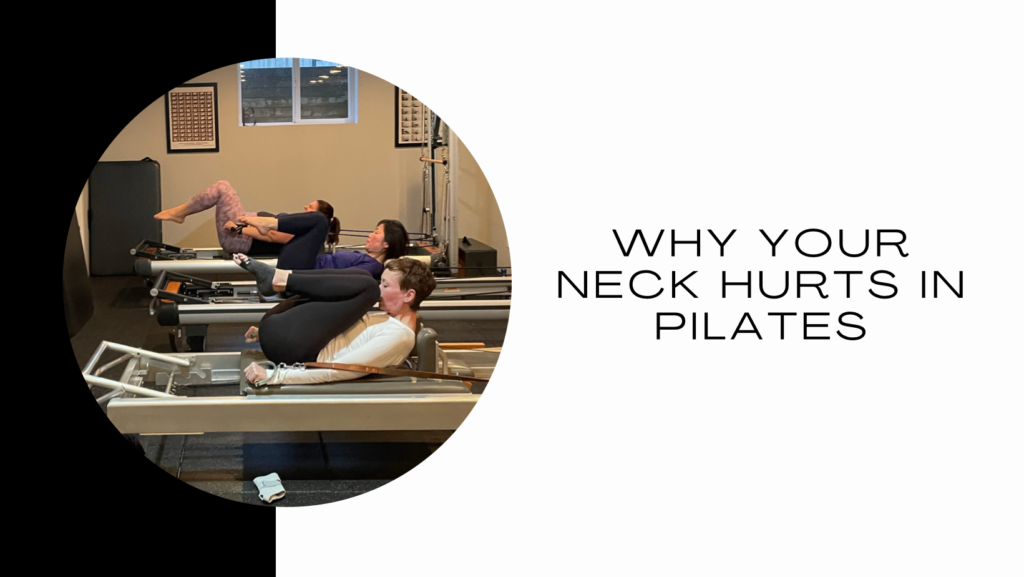
Do you find that your neck hurts in Pilates? Neck pain is a common complaint for those new to Pilates, and it’s not that surprising. We start off most sessions with the hundred and then do a lot of exercises where you lift your head off the ground and hold it there. So what is the solution when your neck hurts in Pilates? My own journey from painful to pain-free lifts will give you some ideas to work with.
It’s Not Just About Strength
When I started doing Pilates, I thought I was strong. I taught aerobics and spin classes and could do crunches for days. All of the Pilates movements that had me lifting my head should have been easy… but it wasn’t. My neck hurt, and as much as it hurt my competitive side, I often had to rest my head down. What was going on?
In the beginning, I was lifting only my head up and not using my core at all. The head is heavy, and if you leave the lifting to just your neck, of course it will be sore. Then I tried relying on my abs to lift me up. I turned to the crunch movement that I knew so well, and bent my body up at the ribs and held it there. This took some strain off my neck, but it still hurt.
At the time, I assumed that I needed to get stronger to make the pain go away. This was partially true, but what I really didn’t know at the time was that I needed to be more aware of how I was moving my body. Now that I’ve been teaching Pilates for years, I see the beginner-me in my clients and guide them as they progress through the various phases of their Pilates practice. Soon, they begin to make the connections in their body and build the strength to lift up with more ease.
The first thing that made the difference was learning how to create a uniform curl of my spine (the C Curve), rather than crunching up. Secondly, I embraced the idea of creating length in my body, rather than shortening with that crunch motion.
To do this, imagine you’re lengthening your body from the tips of your toes up through the crown of your head, and then curl the two ends up and away from your middle. This engages your abs, glutes, inner thighs, back, and neck (a little bit). As you find the connections between your muscles, lifting your legs and upper body will take less effort; it will almost feel like you’re floating up.
If your neck hurts in Pilates, know that as you become more aware of how you are moving your body and finding deeper connections the more your muscles will engage to help you curl up with more ease and strength without trying to engage any muscles in part. And of course, keep practicing!